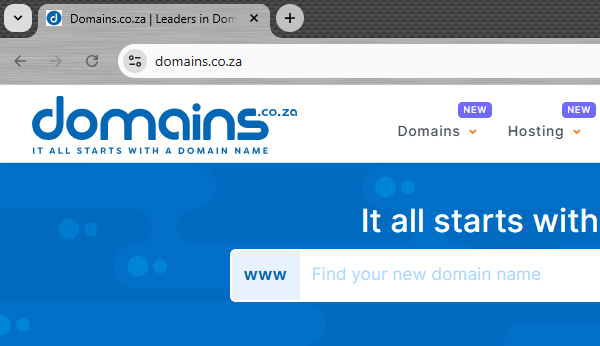The DNS, or Domain Name System, is the backbone of the internet. Each device, such as servers, Wi-Fi routers, mobile phones, laptops, and tablets, is assigned a unique IP (Internet Protocol) address. This address is a series of numbers separated by dots; for example, Google’s server IP address is 173.194.217.106), allowing devices to communicate with each other.
TABLE OF CONTENTS
What is The Domain Name System?
Remembering the numerical IP addresses for websites is difficult for people, which is why human-readable domain names like www.domains.co.za were created to make finding and remembering them easier.
When a domain name is entered into a web browser, the browser connects to the global DNS to retrieve the corresponding site’s IP address, allowing the visitor to access the desired website.

How the DNS System Works
The DNS system is a global network stored on multiple servers worldwide. These servers constantly communicate, provide updates, and ensure redundancy. If one DNS server fails, others can continue providing the necessary information, ensuring people can still connect to the websites they’re looking for.
This is the general process of how the DNS system works to retrieve website information.
- A visitor types a domain name into a browser’s search bar.
- The device sends a query to a DNS resolver, which starts the DNS resolution process.
- The resolver then queries a DNS root nameserver.
- The root nameserver responds with the Top Level Domain (TLD) information, such as “.co.za.”
- The resolver then queries the TLD nameserver.
- The TLD server replies with the address of the authoritative nameserver for the specific domain name (e.g., yourwebsite.co.za), which is queried.
- The nameserver responds with the IP address of the web server hosting the requested domain name.
- The device caches (stores) the IP address for future requests and displays the website in the browser.
The DNS resolver acts as a middleman, handling the process of querying the different levels of nameservers on behalf of the browser. This entire process happens in milliseconds, making it appear instant.
The Domains.co.za Client Portal’s user-friendly interface makes it easy to manage your domains. This includes add-ons, parked domains, and subdomains, all in one place.

Additional Information
ICANN Regulatory Body
To maintain the smooth functioning of the Internet, various authoritative registries are appointed to enforce ICANN (Internet Corporation for Assigned Names & Numbers) regulations globally. Some of the most well-known registries include:
- Verisign: Manages the .com and .net TLDs, which are among the most popular globally.
- Public Interest Registry (PIR): Oversees the .org TLD, commonly used by non-profit organizations.
- Neustar (now GoDaddy Registry): Operates various TLDs, including .biz and .us.
- CentralNic: Manages TLDs such as .xyz, .online, and .site.
- Donuts Inc.: Operates multiple TLDs like .live, .social, and .news.
- Afilias: Manages TLDs, including .info and .mobi.
The comprehensive ICANN Wiki article provides more information about the technical aspects of the Domain Name System.




